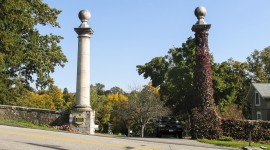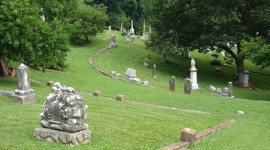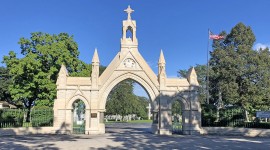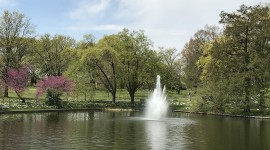Rural Cemetery
Established a short distance outside city limits as places to commune with nature, view works of art, and honor the dead. Rural cemeteries were typically organized by citizen groups, who then commissioned landscape gardeners, landscape engineers, and horticulturists to choose both sites and plantings to fit the shifting of social attitudes on death toward a melancholic and sentimental ennui. Inspired by Picturesque landscapes of Europe, rural cemeteries generally featured winding roads, a network of paths, and family lots incorporated into the topography.
A popular destination for visitors, the rural cemetery typically possessed an arrival assemblage of a gatehouse and administrative office, entry gates or piers and ornamental iron fencing. With guidebooks, visitors explored the cemetery studying the monuments, sculpture, plantings and overall site design.









